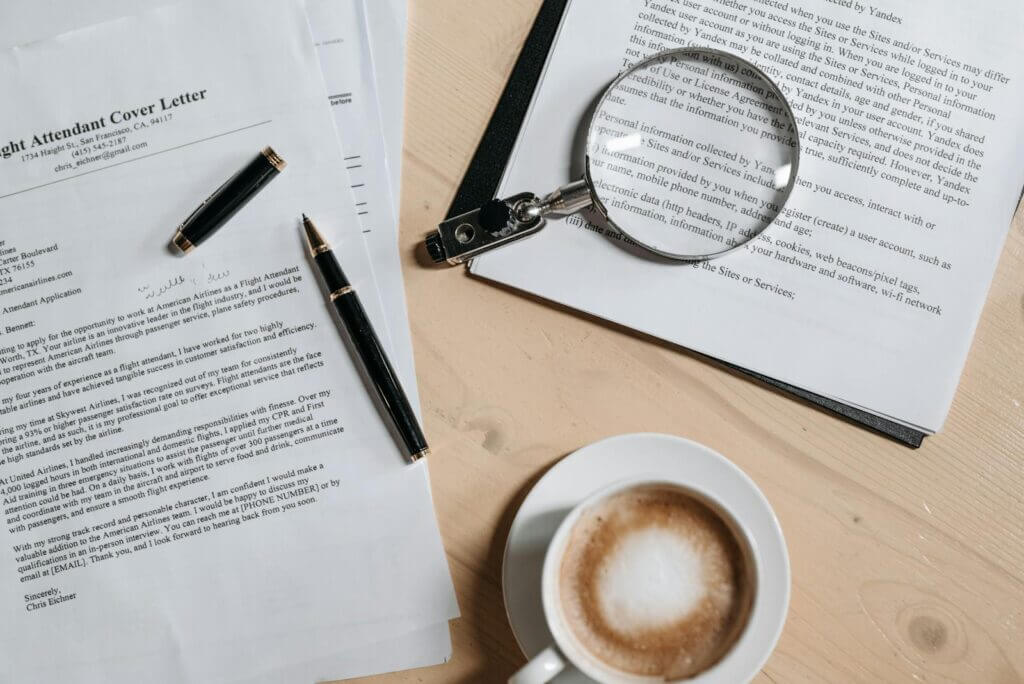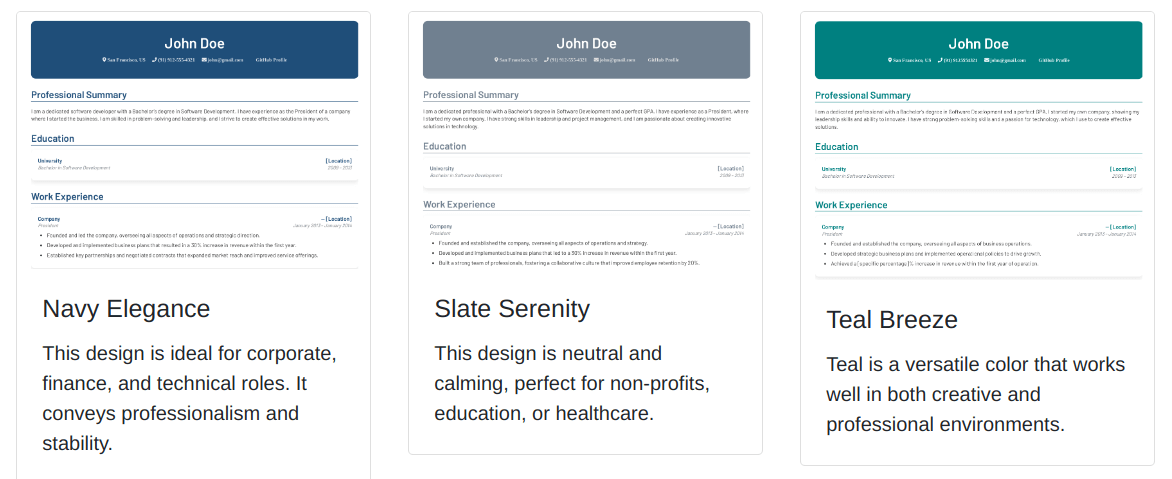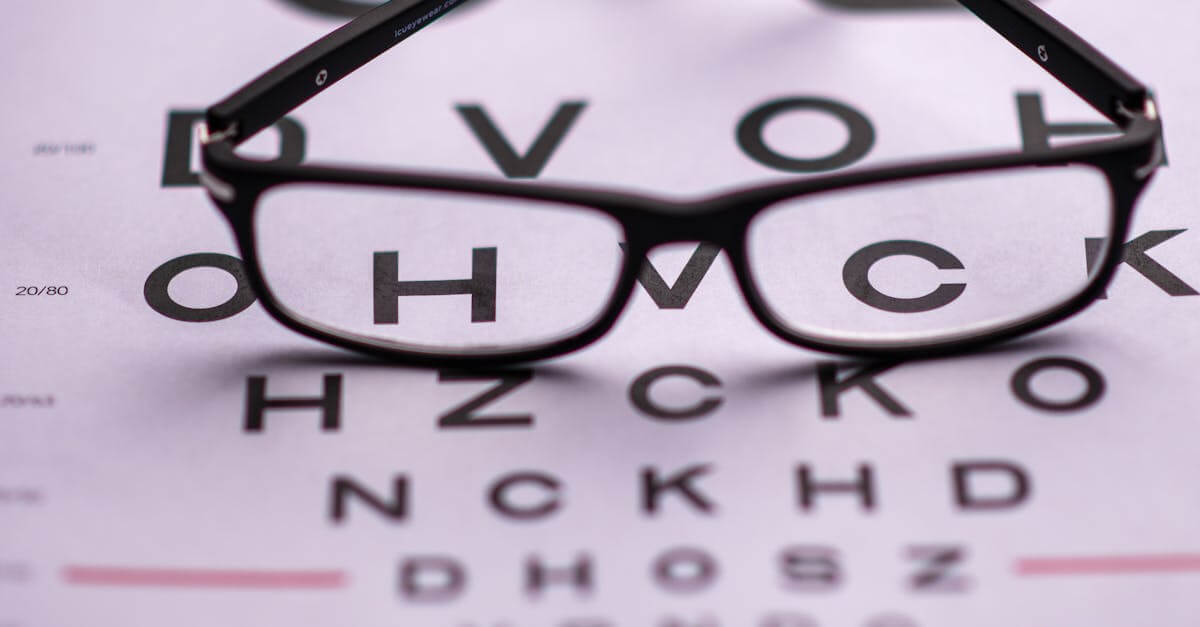Imagine this: you’ve crafted the perfect resume, showcasing your skills and experiences, but then you realize something’s missing. That’s where a cover letter steps in, acting as your ambassador in the job application process. This one-page document isn’t just a formality; it’s your chance to connect with potential employers on a deeper level, expressing not just what you’ve done but who you are.
A compelling cover letter can transform your application from a simple list of qualifications into a narrative that resonates. It allows us to highlight our passion for the role and the unique contributions we can bring to the company. As we jump into the essentials of what makes a cover letter effective, we’ll uncover insights that can elevate our job search and help us stand out in a competitive landscape.

What Is a Cover Letter?
A cover letter is a one-page document accompanying our resume when applying for a job, internship, or other opportunities. It serves as your personal introduction to potential employers, highlighting how our skills, education, and experience align with job requirements and organizational needs.
A well-crafted cover letter plays a crucial role in the application process. It functions as a persuasive piece of writing aimed at convincing the employer to interview us. Rather than simply restating what’s in the resume, a cover letter allows us to share our story, emphasizing why we’re the ideal fit for the position and the company culture.
When crafting a cover letter, we adhere to a specific structure and format. We keep it to one page, using a business letter format with proper grammar, spelling, and punctuation. Essential components of a cover letter include:
- Heading: Our name and Contact information at the top.
- Salutation: A greeting addressing the hiring manager by name, if possible.
- Body Paragraphs: This section includes introducing ourselves, explaining our relevant skills and experiences, and showcasing specific achievements.
- Closing: A gracious ending with a signature line and a call to action, expressing enthusiasm for the role and our availability for follow-up.
To make our cover letter stand out, we can incorporate facts and data relevant to our achievements. For example, instead of merely stating that we excelled in a previous role, we quantify our impact by mentioning specific metrics, such as “increased sales by 25% within six months.”
A cover letter significantly enhances our job application, presenting our qualifications and personality while providing the employer with a first impression of us. A tailored cover letter signals our commitment to the opportunity and helps set us apart from the competition. You can use the ResumeSet tailored cover generation tool to craft a custom cover letter for each job application.
Purpose of a Cover Letter
The purpose of a cover letter extends beyond merely introducing oneself to a potential employer. It serves as a strategic tool, complementing the resume by providing a comprehensive narrative that highlights qualifications, skills, and alignment with the job.
- Highlight Qualifications: A cover letter showcases how our skills and experiences meet the specific requirements of the job. It should link our professional journey to the employer’s expectations for the position, making it clear why we are the ideal candidate.
- Demonstrate Interest: A well-crafted cover letter conveys our genuine interest in the role and the company. It shows that we’ve taken the time to research and understand the organization’s values and mission, which can set us apart from other candidates.
- Expand on Resume: While a resume contains critical information, a cover letter allows us to elaborate on the context of our experiences. For instance, if we’ve had a unique project that showcases leadership or problem-solving, this is the space to highlight such achievements.
- Address Gaps: A cover letter can provide explanations for gaps in employment or transitions between careers. This transparent approach helps build trust with potential employers.
Using a cover letter effectively presents an opportunity to create a compelling first impression. It is not just an afterthought; it’s an essential component of a successful job application. By integrating specific examples and focusing on how our experiences relate to the job, we significantly enhance our chances of securing an interview.
Types of Cover Letters
Cover letters come in various forms, each serving specific purposes in the job application process. Knowing these types equips us to select the right format that showcases our strengths and aligns with our career goals.
Application Cover Letter
An application cover letter is the most common type used for job applications. It directly responds to a specific job posting and emphasizes relevant skills and experiences. This letter connects an applicant’s qualifications to the job requirements outlined in the posting, making it crucial to customize this document for every application.
For example, if a company seeks a project manager with specific software experience, mention how our proficiency with that software contributed to successful project completions in previous roles.
Referral Cover Letter
A referral cover letter highlights a recommendation from someone within the organization or the industry. This letter establishes credibility and strengthens our application by leveraging the influence of the person making the referral. When we articulate how we know the referrer, including their positive remarks about our skills, it enhances trust with potential employers.
For example, if a former manager refers us and highlights our leadership skills, we can mention this in the opening paragraph to create an immediate connection.
Letter of Interest
A letter of interest, or speculative letter, expresses interest in working for an organization without a specific job opening. It showcases our enthusiasm for the company and summarizes our unique qualifications that could benefit them. This type of letter is particularly useful for organizations we admire, as it demonstrates initiative and proactive engagement.
We can discuss how our values align with the company’s mission and specify how our skills could contribute positively to their projects. This strategy often leads to networking opportunities or unadvertised job openings.
Understanding these cover letter types allows us to tailor our approach, maximizing our chances of making a favorable impression on employers. Each format serves as a powerful tool in our career arsenal, highlighting our qualifications and connecting us to potential opportunities.
Key Components of a Cover Letter
A cover letter consists of several key components that contribute to its effectiveness in presenting the applicant’s qualifications and fit for a position.
Introduction
The introduction forms the initial connection with the hiring manager. It should always address the recipient by name, if possible, to personalize the communication. If a specific name isn’t accessible, opt for a more General salutation like “Dear Hiring Manager.” This section must state the position we’re applying for clearly and mention any referrals within the company, establishing credibility. Including a brief summary of our professional background and expressing enthusiasm for the organization sets a positive tone.
Body Paragraphs
Body paragraphs deliver vital details about our experiences, skills, and achievements that align with the job’s requirements. Each paragraph should start with strong action verbs to create impact. For instance, we might begin with “Managed” to showcase leadership experience or “Developed” to highlight innovative projects. Concrete examples can clarify how our skills meet the employer’s needs. Incorporating quantifiable achievements, such as “Increased sales by 20%,” strengthens our claims, making the case for our suitability compelling.
Closing Paragraph
The closing paragraph wraps up the letter succinctly and leaves a final impression. It’s essential to recap any key points that were not fully explained in earlier paragraphs, ensuring a cohesive message. Expressing gratitude to the hiring manager for their time reinforces professionalism and courtesy. A strong call to action should conclude the letter, inviting them to contact us for further discussion or an interview, creating a sense of anticipation for the next steps.
Cover Letter Formatting Tips
Formatting a cover letter effectively plays a crucial role in capturing an employer’s attention. Here are essential tips to ensure a polished and professional presentation.
- Use Consistent Heading: Align the heading of your cover letter with your resume’s format. Include your name, address, phone number, email address, and date.
- Font Size and Style: Select a font size between 10-12 points for readability. Preferred fonts include Times New Roman, Courier, or Helvetica.
- Standard Business Format: Adopt standard business formatting, including the employer’s name and title, company information, and address. Ensure alignment of the text to the left.
- Maintain Margins: Keep margins at 1 inch or more, avoiding reductions to under 0.5 inches to prevent cutting off content when printed.
- Single Page Limit: Limit the cover letter to one page as employers typically prefer concise documents.
- Professional Greeting: Address the letter to a specific individual if possible. Use titles accurately and avoid generic salutations like “To Whom It May Concern.”
- Spacing and Structure: Use appropriate spacing for clarity. Leave a single space between paragraphs and ensure paragraph lengths are brief and focused.
- Proofread for Errors: Thoroughly proofread to catch spelling and formatting errors. Ensure names and titles are accurate.
- PDF Format for Submission: Save the final version as a PDF to maintain formatting, especially when submitting online.
Following these formatting guidelines strengthens the overall presentation of your cover letter, making it more appealing to potential employers. An organized, structured approach demonstrates professionalism and attention to detail, crucial traits in any candidate.
Examples of Effective Cover Letters
Effective cover letters demonstrate how an applicant’s skills align with the needs of the employer. Below are examples that showcase different approaches to success.
General Example
A strong cover letter begins with a clear introduction. This introduction should grab attention and make an immediate impact. Here’s a general example:
[Your Name] [Your Address] [City, State, Zip] [Email Address] [Phone Number] [Date] [Employer's Name] [Company Name] [Company Address][City, State, Zip]Dear [Employer's Name],
I’m excited to apply for the [Job Title] at [Company Name] as advertised on [where you found the job]. With a background in [your field/industry] and [number] years of relevant experience, I’m confident that I can contribute significantly to your team. My passion for [specific area of expertise] drives my commitment to excellence, and I thrive in fast-paced environments that require strong organizational skills and attention to detail.In my previous role at [Previous Company Name], I [specific achievement or responsibility that relates to the job]. This experience not only honed my skills in [relevant skills] but also taught me the value of [specific lesson or value]. I’m particularly drawn to [Company Name] because of [specific reason related to the company or its values].
Thank you for considering my application. I’m looking forward to the opportunity to discuss how my background, skills, and enthusiasm align with the needs of your team.Sincerely, [Your Name]
Tailored Examples by Industry
Technology Sector
In a tech-related cover letter, showcasing knowledge about the industry and relevant skills stands out.
I’m writing to express my interest in the Software Engineer position at [Company Name]. With a Master’s degree in Computer Science and over five years of experience specializing in backend development, I thrive in dynamic environments where innovation is key.At [Previous Company], I developed a data processing system that improved efficiency by 30%, showcasing my ability to blend technical expertise with creative problem-solving. Retail Sector
For a retail opportunity, emphasis on customer service skills is crucial.
I’m eager to apply for the Retail Manager position at [Company Name]. My background in retail management, combined with my passion for customer satisfaction, positions me as an ideal candidate.At [Previous Company], I led a team to achieve a 15% increase in sales through implementing a customer loyalty program that resonated well with our clientele. I believe in cultivating positive shopping experiences that foster brand loyalty. Healthcare Sector
In healthcare roles, demonstrating compassion and experience is essential.
I’m excited to apply for the Nurse Practitioner role at [Company Name]. With a Doctorate in Nursing Practice and over eight years in clinical settings, I’m dedicated to delivering high-quality patient care.At [Previous Hospital], I led initiatives that improved patient satisfaction scores by 20%, illustrating my commitment to patient advocacy and effective communication within multidisciplinary teams. Each example illustrates how to customize a cover letter to resonate with the specific industry and the values of the employer. Tailoring content shows dedication and enhances the chances for favorable consideration.
Cover letter template
Creating a cover letter involves more than just filling in the blanks. A well-structured template helps applicants present their qualifications in a clear, compelling manner. Here’s a comprehensive cover letter template to guide the writing process:
Your Name
Your Address
City, State ZIP Code
Your Phone Number
Your Email Address
Date
Employer’s Name
Company Name
Company Address
City, State ZIP Code
Dear [Hiring Manager’s Name],
[Opening Paragraph]
Express enthusiasm for the position by stating the job title and company name. Introduce yourself by explaining why you’re applying for the job and how it aligns with your career goals. Mention what attracts you to the company specifically.
[Body Paragraph 1]
Detail relevant experience and qualifications that demonstrate your fit for the role. Highlight one or two key achievements with supporting data to substantiate your claims. Use strong action verbs to convey confidence and capability.
[Body Paragraph 2]
Illustrate additional skills or experiences that enhance your suitability. If applicable, briefly address any employment gaps or transitions in your career, framing them positively.
[Closing Paragraph]
Summarize your qualifications and reaffirm your interest in the role. Include a call to action, suggesting your availability for an interview and your preferred method of contact.
Thank you for considering my application. I look forward to the opportunity to discuss how my skills align with the needs of [Company Name].
Sincerely,
[Your Name]
- Personalization: Tailor each cover letter to the specific job and organization, ensuring it reflects your voice and enthusiasm.
- Professional Format: Maintain consistent formatting, including margins, font size, and spacing.
- Practice Clarity: Keep language concise and free of jargon to enhance readability.
- Proofread: Thoroughly check for any spelling or grammatical errors before submission.
Using this template as a foundation, applicants can craft a persuasive cover letter that highlights their strengths and sets them apart in a competitive job market. Each element, from the greeting to the closing statement, plays a crucial role in making a strong impression.
Key Takeaways
- Definition and Importance: A cover letter is a one-page document accompanying a resume that serves as a personal introduction, demonstrating the candidate’s qualifications and fit for the position.
- Structure: Key components include a heading, salutation, body paragraphs detailing skills and experiences, and a closing paragraph that encourages follow-up.
- Types of Cover Letters: There are several types, including application cover letters, referral cover letters, and letters of interest, each serving specific purposes in the job application process.
- Highlight Qualifications: A cover letter should emphasize how your experiences align with the job requirements, showcasing your unique contributions and interest in the role.
- Formatting Tips: Use a consistent format with appropriate spacing, proper font size, and a professional greeting. Limit the document to one page and ensure it is free of errors.
- Tailoring is Key: Customizing each cover letter for the specific job and company significantly enhances your chances of standing out among other candidates.
Conclusion
A well-crafted cover letter is our chance to shine in the job application process. It’s more than just an introduction; it’s a powerful tool that showcases our qualifications and personality. By tailoring our cover letter to each opportunity we pursue, we can effectively communicate our fit for the role and the organization.
We’ve explored the essential components and formatting tips that can elevate our cover letters. With thoughtful customization and attention to detail, we can create a compelling narrative that resonates with hiring managers. As we embark on our job search journey, let’s remember that a standout cover letter can be the key to unlocking new opportunities.
Frequently Asked Questions
How important is a cover letter in a job application?
A cover letter is crucial in a job application as it acts as your personal ambassador. It allows you to showcase your personality, explain your qualifications, and express genuine interest in the position, helping you stand out in a competitive job market.
What are the key components of an effective cover letter?
An effective cover letter includes a professional heading, a personalized salutation, engaging body paragraphs detailing relevant experiences and skills, and a strong closing. Each element should connect your qualifications with the job’s requirements to demonstrate your fit.
How should I format my cover letter?
Format your cover letter in a professional manner. Use a readable font, standard business formatting, and consistent margins. Limit it to one page. Address it to a specific person when possible, and ensure thorough proofreading to eliminate errors.
What types of cover letters are there?
There are several types of cover letters, including the application cover letter (responds to job postings), referral cover letter (leverages recommendations), and letter of interest (expresses enthusiasm for a company). Understanding these can help tailor your approach effectively.
How can I make my cover letter more impactful?
To make your cover letter impactful, focus on quantifiable achievements, use strong action verbs, and personalize your content. Highlight how your skills align with the company’s needs, and ensure your enthusiasm for the position shines through.


